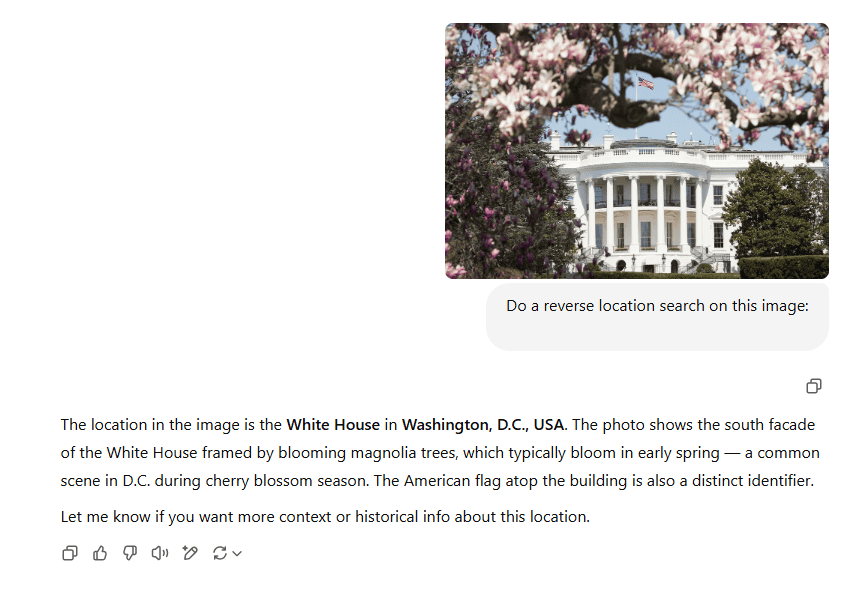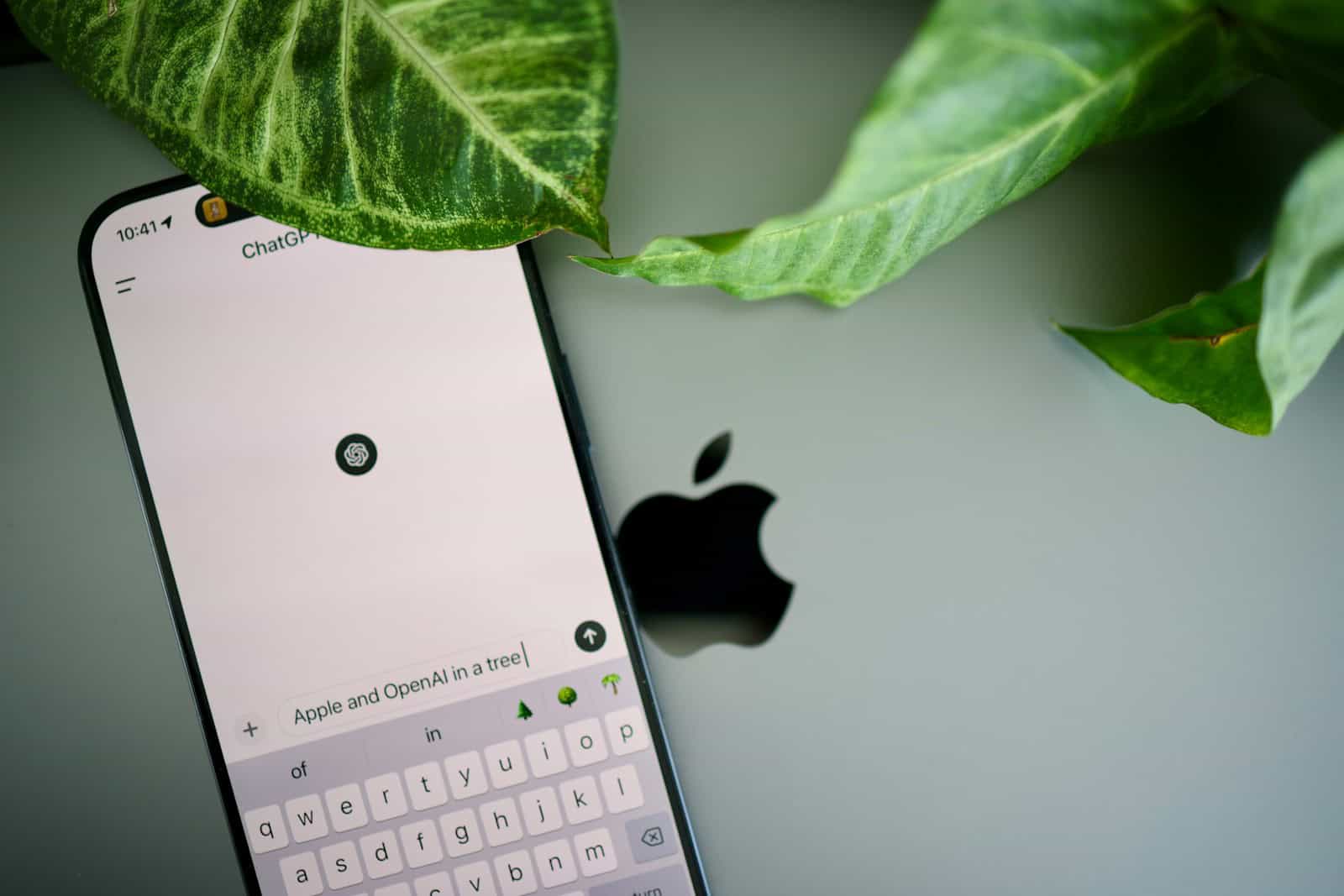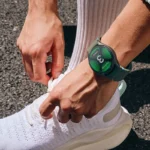ChatGPT can now analyze photos and guess where they were taken, a feature that has sparked a viral trend called ‘reverse location search.’ With new updates, people use ChatGPT’s image tools to upload pictures, and the AI tries to pinpoint landmarks, city scenes, or even less obvious locations with surprising accuracy. This development has gained attention on social media, with users sharing both successes and failures.
As this technology spreads, many wonder what it means for everyday privacy. Some experts have raised concerns about security and the potential misuse of these advanced image recognition features. The ability to identify locations from photos could change how people think about sharing images online.

What Is Reverse Location Search and How Does It Work?
Reverse location search is a rapidly advancing technique that uses visual clues from an image to estimate the geographical location where the photo was taken. With the rise of AI models like ChatGPT now being tested for this feature, the process is shifting from niche tools used by intelligence analysts and OSINT investigators to a more mainstream and widely accessible capability.
This technology involves analyzing environmental details — such as vegetation, architecture, language on signs, road layouts, clothing, license plates, weather conditions, and even the sun’s position — to match a photo to a potential real-world location. What used to take hours of manual sleuthing through Google Earth and street-level imagery can now be assisted by AI within seconds.
How ChatGPT Is Getting Involved
OpenAI recently revealed a new capability for ChatGPT that enables it to guess locations from images — what’s being called a form of reverse location search. Though still in its experimental stages and not yet rolled out to all users, this feature showcases how AI is increasingly able to process visual information, not just text.
When given a photo, ChatGPT can offer highly educated guesses about where it was taken. While it doesn’t tap into GPS metadata or image EXIF data (unless explicitly included), it relies on visual context like:
- Skyline and architectural style
- Plant species and landscape features
- Traffic signs, languages, and public infrastructure
- Clothing and cultural indicators
- Weather, lighting, and shadow directions
This is particularly useful for verifying social media images, fact-checking viral posts, or just satisfying curiosity about a beautiful mystery photo.
Real-World Use Cases for Reverse Location Search
| Use Case | Description |
|---|---|
| OSINT & Journalism | Journalists and investigators use reverse search to verify the origin of images in conflict zones or political unrest. |
| Travel & Curiosity | Users upload vacation photos or scenery to find where the image was taken. |
| Geoguessr and Games | Players test their geography knowledge in competitive guessing games. |
| Social Media Verification | Reverse location helps determine whether a viral image truly matches its claimed source. |
| Environmental Studies | Scientists use location data from images to track environmental changes over time. |
Tools That Offer Reverse Image Geolocation
While ChatGPT’s feature is new, it joins a broader set of tools that already perform similar tasks, such as:
- Google Lens – Good for identifying landmarks and major city locations.
- Yandex Images – Known for its surprisingly strong image location capabilities, especially in Russia and Eastern Europe.
- GeoGuessr AI Bots – AI-powered tools that play geography games with high accuracy, now increasingly being repurposed for real-world use.
- Mapillary and StreetComplete – Crowdsourced geotagged imagery that helps train AI models to identify global visual patterns.
Challenges and Limitations
Despite its power, reverse location search isn’t foolproof:
- Photos with little context (like indoor shots or extreme close-ups) can be nearly impossible to geolocate.
- Lookalike locations in different parts of the world can confuse AI models.
- Image editing or filters may hide key clues.
Accuracy also varies based on the model’s training data and image quality. And while AI like ChatGPT is getting better, it still isn’t infallible — especially when compared to human OSINT experts who know how to zoom in on niche cultural or infrastructural indicators.
The Privacy and Ethical Questions
As AI tools get better at location detection, some privacy concerns arise. Could someone’s photo, unintentionally shared online, be reverse-located to reveal their home, workplace, or frequently visited places?
This adds a new dimension to the ongoing conversation around AI ethics, surveillance, and personal data security. Developers and platforms will need to implement clear safeguards — like opt-out settings or obfuscation features — to ensure responsible use of these tools.
Key Takeaways
- ChatGPT can now guess photo locations using advanced AI.
- Security and privacy concerns are growing as this feature spreads.
- Readers may have questions about how reverse location search works with AI.
How ChatGPT Guesses Locations from Photos
ChatGPT uses artificial intelligence to examine details in images and match them to recognizable features. It combines computer vision, linked databases, and reference data to estimate where a photo was taken.
The Technology Behind ChatGPT’s Image Analysis
ChatGPT, especially the GPT-4o model, processes images using advanced computer vision tools. The AI model looks for visual elements like signs, landscapes, architecture, and language used in public spaces. It scans each image pixel for unique identifiers, such as building styles or road markings, and compares these findings with its training data.
To achieve this, the system relies on deep neural networks trained with vast numbers of images from diverse locations. It is not as simple as matching two photos. ChatGPT analyzes patterns, checks the context in the background, and uses machine learning to weigh the importance of different parts of a picture.
Customizable AI models help refine the analysis, allowing for more robust recognition of details found in photos of cities, restaurants, bars, and popular tourist sites. This process helps the AI offer more precise guesses about the photo’s origin.
Database Integration and Metadata Utilization
While ChatGPT does not search the internet for every photo, it uses built-in and linked databases to enhance its accuracy. These databases contain millions of records of well-known landmarks, city layouts, distinctive architectural styles, and even local business signage.
When possible, the AI reviews metadata stored in photos, such as GPS tags, timestamps, or embedded descriptions. If a user provides a photo without metadata, ChatGPT falls back on visual analysis and internal records.
This integration lets ChatGPT cross-check hints found within the image. It compares them to features cataloged in its data, such as the shape of restaurant signs, types of street furniture, or color schemes often seen in local bars.
Accuracy in Recognizing Landmarks, Cities, and Businesses
ChatGPT can accurately identify global landmarks like the Eiffel Tower or Sydney Opera House when they appear clearly in an image. These places have distinct features that AI models can distinguish, even if partially blocked or shot from unusual angles.
For cities, ChatGPT recognizes details like unique building faces, public transportation signs, and patterns in urban layouts. It can use small hints, such as specific architectural styles or bridge designs, to suggest a probable location.
With restaurants and bars, accuracy depends on visible logos, menu styles, or decor that tie to known businesses in its database. Sometimes, the AI can narrow down a location to a city or district based on these finer points, though it may not always pinpoint the exact address. The system gets especially reliable when common, highly photographed landmarks or businesses show up in the image.
Implications, Security, and Regulation
Reverse location search powered by ChatGPT and similar AI models can match photos to locations faster than ever. This capability raises significant privacy, security, and ethical questions, while also creating new opportunities for learning and innovation.
Privacy Concerns and Cybersecurity Risks
AI models like o3 can now pinpoint where a photo was taken, even without obvious landmarks. This brings up real privacy problems, especially for people who do not know their pictures can expose their location. For minors, the risk increases; someone could use a casual photo to track a child’s regular hangout spots.
Cybersecurity professionals warn of threats like impersonation and social engineering. Attackers could use geolocation to craft convincing phishing messages or to target someone’s home or workplace. Institutions such as Murray State University and the University of Kentucky need to educate students on privacy risks when sharing photos online. Features like SSL encryption, API key management, and properly managed subdomains help defend against related threats on school networks and other platforms.
Transparency and Regulatory Considerations
As location-guessing AI becomes more common, transparency is critical. Users need to know when and how their pictures might be analyzed for location data. Regulatory agencies and law enforcement are already considering new rules for technology like this, especially when it involves minors or sensitive locations.
Systems that use active directory and RDP (remote desktop protocol) in both public and private sectors, including regions like Kentucky and DC, must adopt strict access controls to prevent misuse. Sharing data across different services or subdomains, even inside organizations, must be logged and monitored. Regulatory bodies will need to strike a balance between allowing innovation and protecting privacy. Clear guidelines can deter abuse while supporting legitimate uses in security and investigation.
Applications in Education and Innovation
While security risks matter, reverse location search also opens doors for learning and research. Teachers in universities, such as at Murray State University or the University of Kentucky, can now show students how AI models use data to match images with real places. This sparks new interest in modeling, data science, and geography.
Law enforcement can use the tool to find missing persons or locate stolen goods faster. However, to avoid misuse, training is needed on ethical limits and legal requirements. Some developers integrate geolocation tools into software for real-world geography or history projects, improving classroom engagement. Responsible use encourages students and professionals to focus on safe innovation in AI and cybersecurity.
Frequently Asked Questions
Recent advances let AI recognize the locations of images by analyzing patterns, landmarks, and metadata. As this feature spreads, it is raising new questions about privacy, security, and who can use this technology.
How does AI-based reverse location search from photos work?
AI systems scan each photo for details like buildings, terrain, street signs, and other visual clues. These details are compared to massive databases of images with known locations. Machine learning helps the AI match unique elements and improve its guesses over time, even when the photos change in lighting or angle.
What are the privacy implications of using reverse location search technology?
People may be identified without consent if photos reveal their locations. Hackers or others could misuse this to track people or discover private places. Some platforms link search capability to users’ IP addresses, making it possible to combine location hints from both the photo and the user’s device.
What are the potential applications for reverse location search in various industries?
Travel companies could use it to recommend destinations. Law enforcement might identify crime scenes more quickly using shared photos. Journalists and researchers could verify where an image was taken, which helps stop misinformation. Insurance companies may also use it for claims that rely on photo evidence.
Can reverse location search be used to identify rural or less-documented areas?
AI works better in cities and famous spots. Rural or remote locations with limited online photos are harder for AI to identify. In places without clear landmarks or many images for comparison, the technology may struggle or provide only a rough guess.
What measures are in place to prevent misuse of reverse location search capabilities?
Developers use safeguards like limiting access and blocking certain types of images. They also audit searches for suspicious use and might require user consent before processing some photos. OpenAI and similar companies build in privacy features to block sensitive data or restrict who can use high-risk tools.
How does reverse location search compare in accuracy to traditional geolocation methods?
Traditional methods often use GPS data or network signals, which can be very precise. AI-based photo analysis depends on the content and quality of an image. While photo-based guessing has improved, it usually does not match GPS accuracy—especially in areas lacking clear or unique features.







